Pandas, Pandas, Pandas
My first stop on my panda adventure in China was at the Shaanxi Wild Animals Rescue and Research Center. This was my last trip with i-to-i (thank god!) and I volunteered there for one week. The center is located just an hour outside of Xi’an a the base of the Quinling Mountains, but unlike the sanctuaries in Chengdu it is relatively unknown and does not get too many tourist visitors. However there were a few Chinese tourists and one day when I was inside my pandas outdoor enclosure cleaning out the old bamboo a group of Chinese boys came by and actually started to take pictures of me inside the cage. I had been saying the whole time in China that I felt like an animal in the zoo having people take pictures of me and now it was finally happening. They stayed for almost a half an hour snapping pictures and yelling hello since it was the only English word they knew. Other than that experience, my time at the center was pretty good.
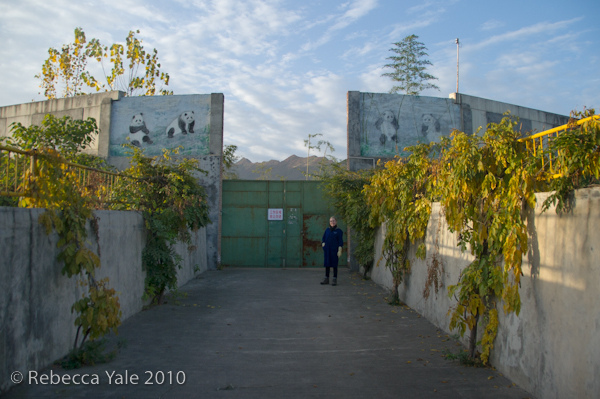
The center is home to many animals including pandas, red pandas, Asiatic black bears, golden monkeys, takins, and crested ibis’, but I only was able to work with the pandas. There were also many interesting wild birds that fly around the sanctuary and a ton of insects including some gigantic spiders.
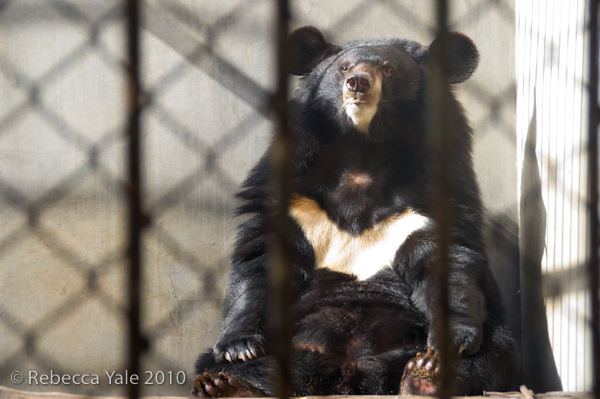
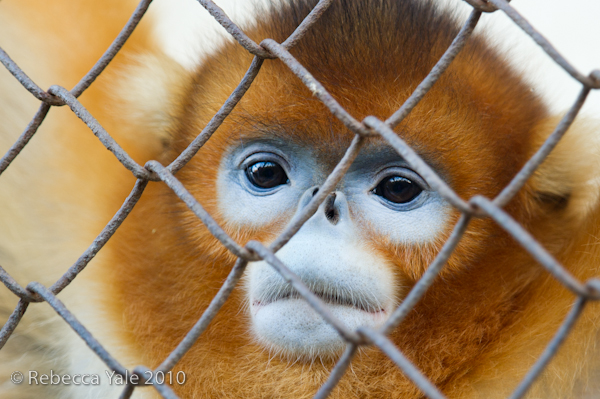

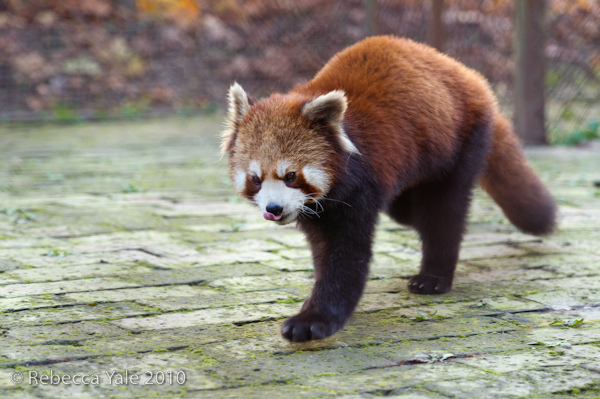
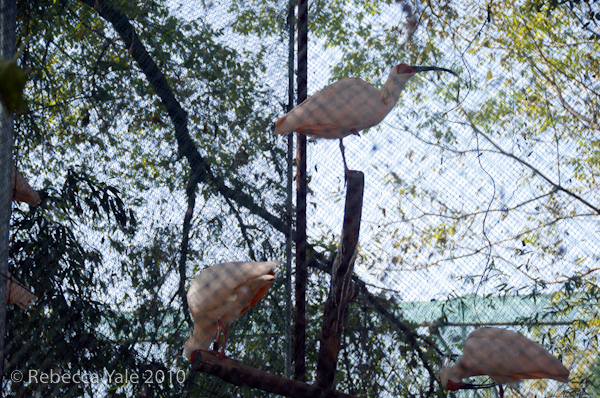
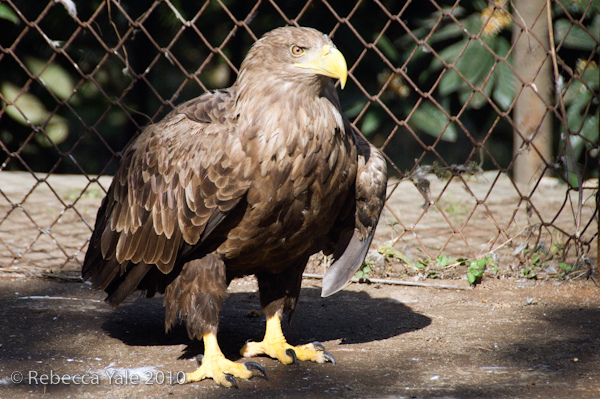
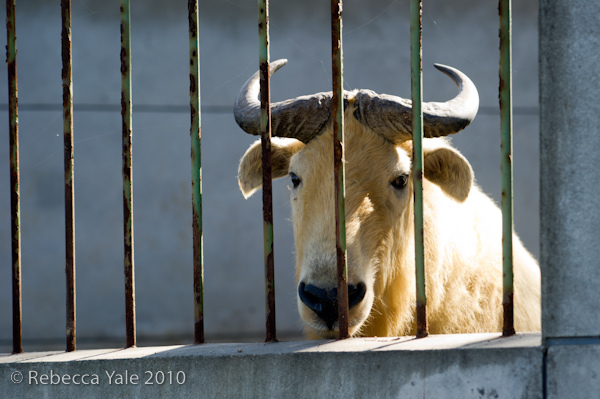
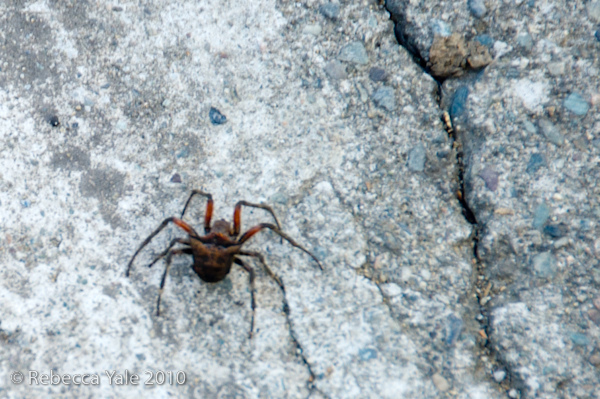
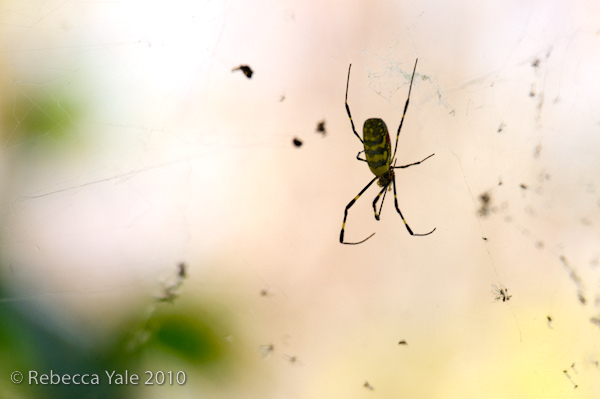
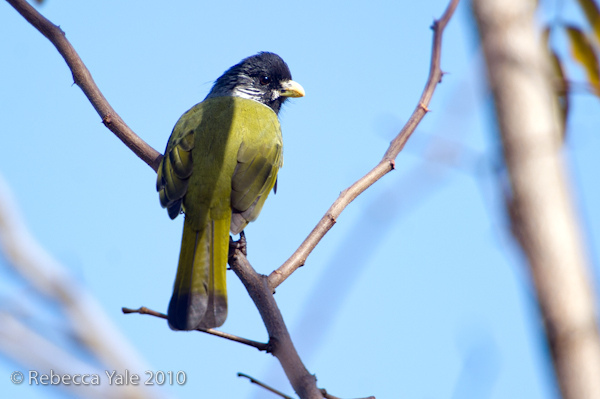
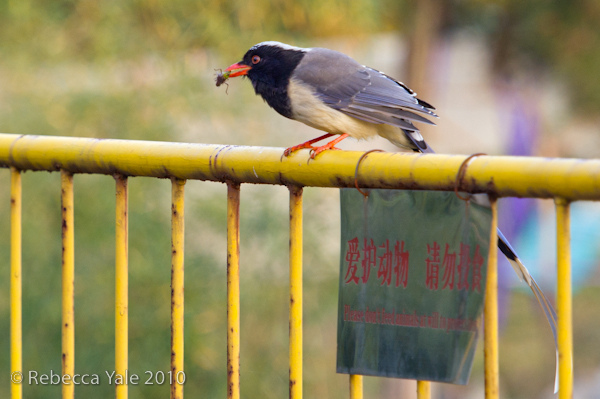
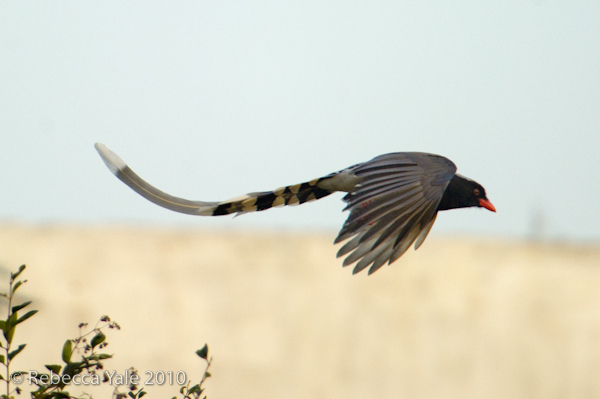
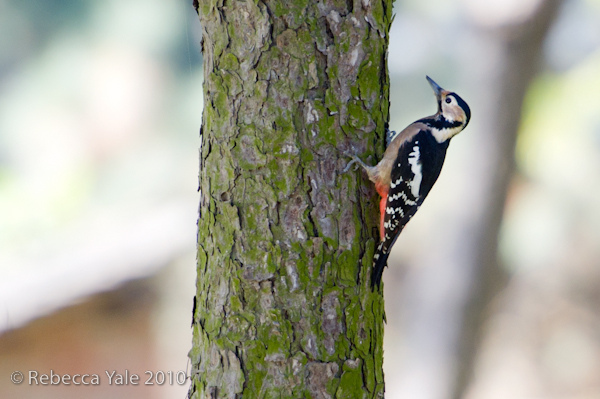
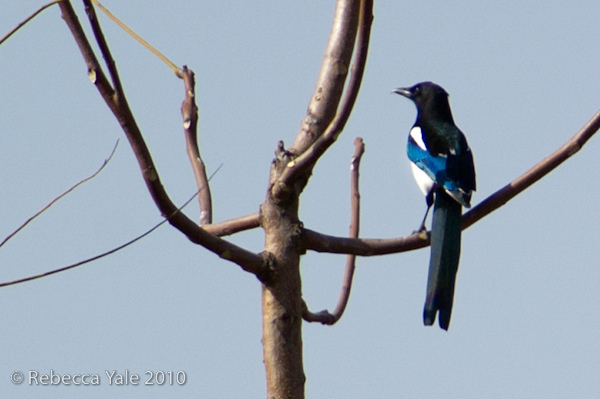


There was also a very endangered cloud leopard at the sanctuary, but I never got to actually see it and therefore never got a picture of it. The leopard was kept in a very small cage with no natural environment area and always stayed hidden in the dark inside area of his cage and hissed when people walked by. I asked many times what he was doing there, but was never able to get an answer. The Chinese do a wonderful job conserving their pandas, however the other animals didn’t seem to be treated very well. All the other animals were in small cement cages with no natural environment area like the “pandas gardens” as well called them. Historically in China big cats have never been treated well and China has the largest black market for endangered animals. Mao declared tigers and Leopards pests during the Great Leap Forward in the 1950’s and the South China Tiger’s numbers went from 4,000 to less than 200 in 1982. Hunting was banned in 1977, but the damage was already done and now according to IUCN they are suspected to be extinct in the wild with possibly less than 50 remaining in captivity around the world. There is actually a new project breeding them in South Africa similar to the breeding of the Bengal tiger there, because it is just not safe right now to breed them in China.
As I said before though, the Chinese are doing a great job conserving their pandas. Pandas are located in two provinces of China- the Shaanxi Province in the north and the Sichuan Province in the south. The pandas at the center are part of a breeding program for the Shaanxi pandas and will most likely remain in captivity their whole lives. When I asked about eventually returning them to the wild I never got a straight answer. The government controls all of the conservation efforts and in communist fashion it was all very hush hush when it came to asking questions about policy.
While at the center each volunteer is assigned to two pandas and is responsible for helping to feed them and clean their cages. Some centers do let volunteers interact with the smaller pandas, but the center I was at had a zero interaction policy for the safety of both the pandas and volunteers. Pandas are susceptible to human diseases and before volunteering you must get a note from your doctor saying you have no communicable diseases that you could pass to the pandas. I took care of two pandas by the name of Zhu Zhu and Ding Ding, a girl and a boy respectively. They were beautiful, sweet and adorable animals who I will dedicate a post to soon.
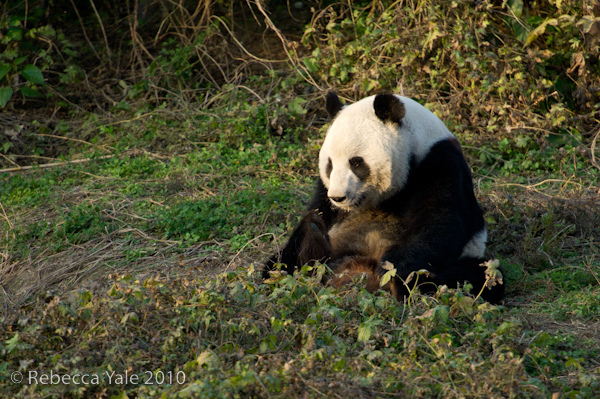
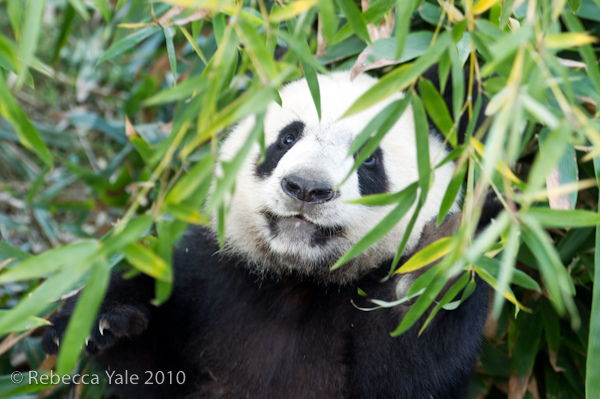


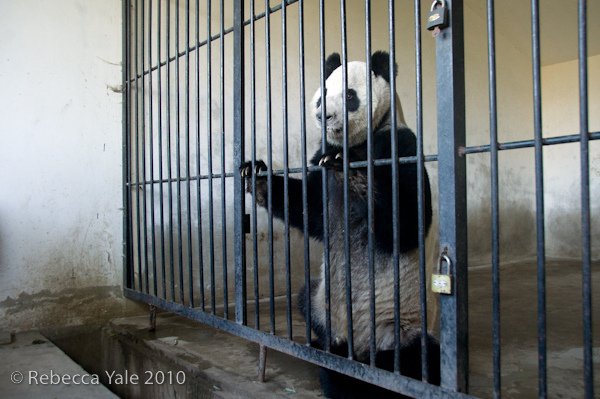
One of my favorite things to do at the sanctuary was watch the babies play in their enclosure. The sanctuary had 5 babies around 1 year old while I was working there. At that age they are very active and will play in their garden, rolling around, climbing trees and exploring their domain.
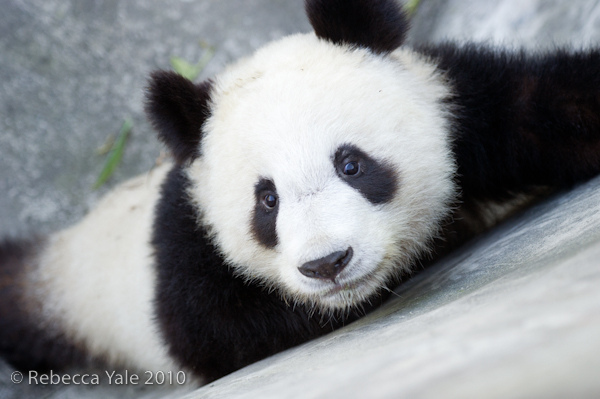
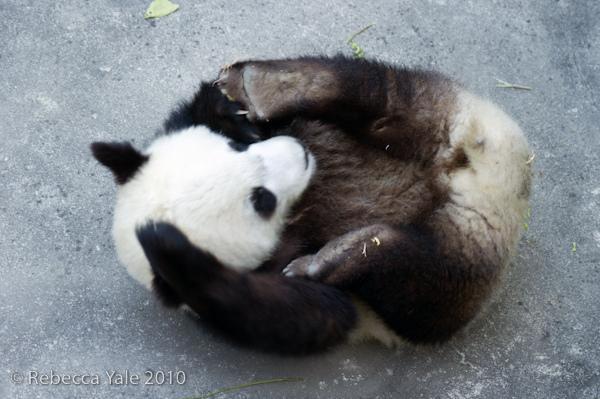
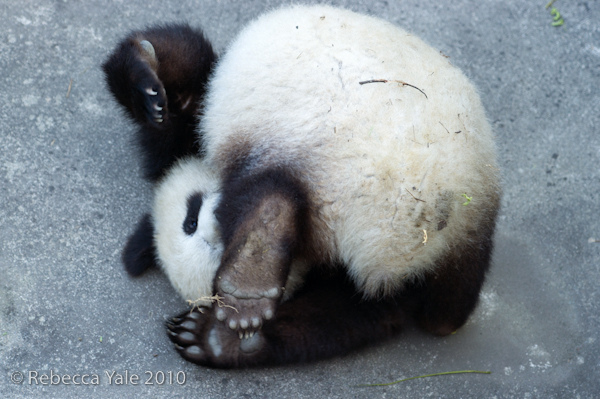
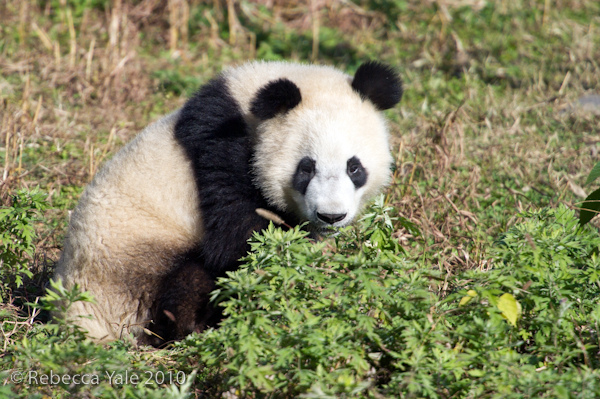
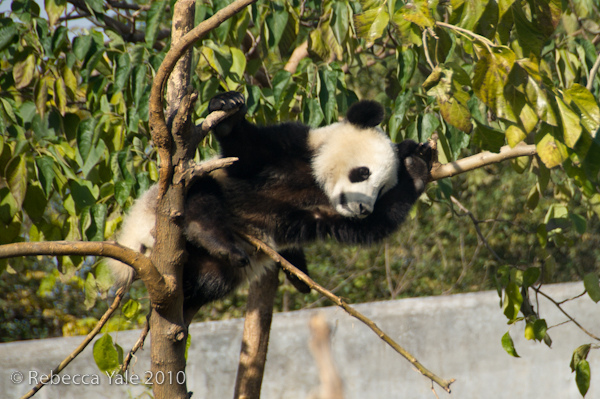

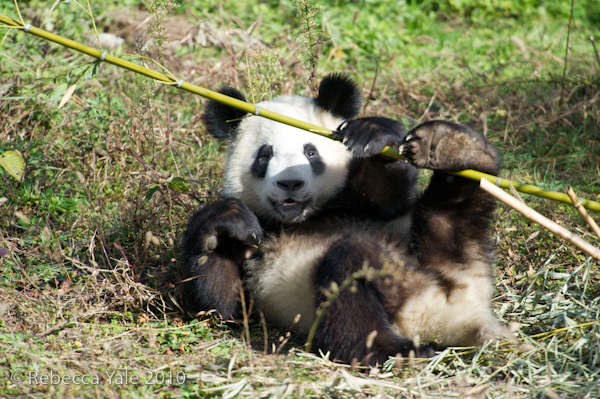
There was one very rare brown and white panda at the center, which is the only one of its kind in captivity right now. When I asked at the center why it was a light brown color I was told it was a very rare sub-species only found in this area. However, after a little research online I found that it is actually a genetic mutation that occurs from too much in breeding from the same pool of genetics. Not a surprising fact given that the genetic pool for the panda is quickly dwindling and because of new roads in the Qinling Mountains it is very hard for the pandas to reach a new genetic pool in the wild. Again tthe sanctuary was very hush hush about the aberration and I suspect they would not give me a straight or truthful answer because it was negative.
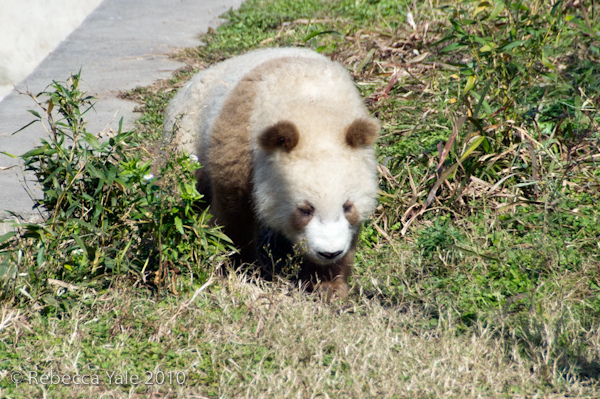
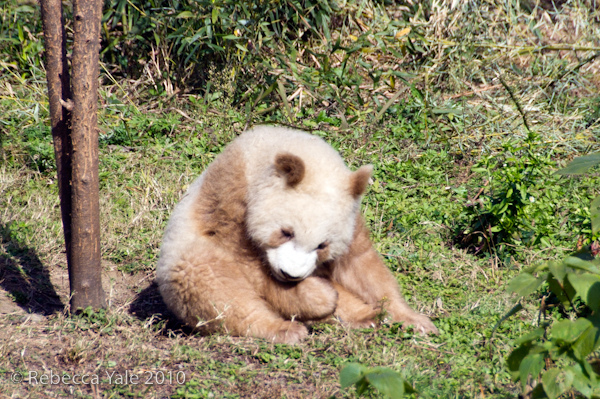

There is hope for the beautiful panda bear and while this sanctuary and the others in Chengdu are doing a good job breeding them, they will not be safe until humans change their actions. Their main threat is habitat destruction due to our actions and it something humans can stop. To read more about the panda and learn more ways in which you can help check out the WWF.